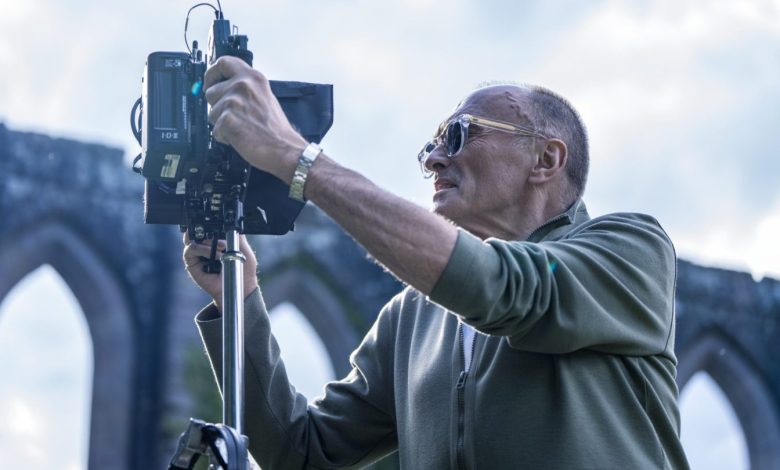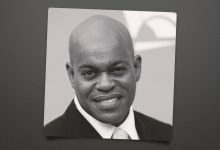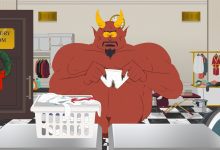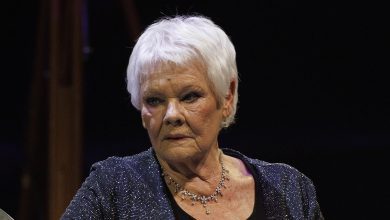Danny Boyle Talks ‘28 Years Later’ Trilogy Plan, Turning Down ‘Alien’ and the Time ‘127 Hours’ Made Pixar Animators Faint

On Danny Boyle’s 11th birthday, he and his twin sister were given a special treat, when their parents took them to the movies for the first time. Boyle and his father saw the Henry Fonda war epic Battle of the Bulge, while Boyle’s sister and mother watched The Sound of Music, which a year earlier won best picture at the Oscars.
Boyle was hooked. But growing up in a working-class family near Manchester, England, no one could have guessed that five decades years later, he would boast his own best picture winning-movie, 2008’s Slumdog Millionaire, and a kinetic style he has applied to dizzying number of genres, including drug-infused dark comedy (Trainspotting), zombie thriller (28 Days Later), true-life tale (Steve Jobs, 127 Hours) hard sci-fi (Sunshine), and feel-good musical (Yesterday), to name a few.
On Friday, the auteur returns to theaters with 28 Years Later, a $60 million sequel that arrives more than twenty years after he and writer Alex Garland revitalized the zombie genre with the $8 million budgeted 28 Days Later. The duo spent years toying with ideas, and surprised Hollywood in early 2024 when they took out two scripts to the town. A bidding war erupted, with Sony ultimately committing to making 28 Years Later and sequel 28 Years Later: The Bone Temple back-to-back, with the possibility of a third installment, in success.
The move reunited Boyle with Sony film boss Tom Rothman, who previously made eight films with the director, including Slumdog. Rothman acknowledges that while 28 Years Later is somewhat an IP play, it was the potent combination of Boyle and Garland that made the package irresistible. He sees it as a trend referred to internally Sony as auteur horror — filmmaker-driven movies like Robert Eggers’ Nosferatu or Ryan Coogler’s Sinners.
“I have unbounded respect for Danny Boyle’s talent and his integrity,” says Rothman, who recalls of reading the scripts during the bidding phase, “One was cooler than the next.”
When Garland wrote 28 Days Later, he was then known as the novelist behind The Beach, which Boyle adapted as a 2000 movie starring Leonardo DiCaprio. In the 28 Days‘ defining moment, Cillian Murphy’s Jim wakes up from a coma to wander a deserted London. Garland had the idea, but Boyle pushed it further than the scribe could have imagined.
“I think there is a third of a page of the script is saying, ‘Jim walks through empty London’” recalls Garland. “Danny took that third of a page, and expanded it into a long sequence that ended up being the defining sequence of that film. That is what a good director is. They see something in the blueprint, and then they expand on it.”
In a career-spanning look back with The Hollywood Reporter, Boyle talks his flirtation with Alien, Ewan McGregor and Murphy convincing him they were the right guys for their career-making roles, and what’s next for the 28 Years Later franchise.
Ewan McGregor starred in your your debut, Shallow Graves, as well as your next two films. What were your first impressions of him?
Clearly talented. Very charming. Personable. Incredible hair. Especially speaking as somebody who doesn’t have incredible hair. It’s just not fair! His agents were putting him in period romances, for which it was perfect. And he shaved it off before we’d offered him the part of Renton in Trainspotting. He shaved it off and lost weight. And then he continued to lose weight. He was fanatical about that. And he was right. He earned the part. Sometimes an actor knows more than you. They have a connection that you are going to discover by making the film.

Ewan McGregor in Trainspotting
Miramax/Courtesy Everett Collection
It sounds like it wasn’t clear that Ewan was right for Trainspotting. Who else has known more than you about a role, as you say?
Cillian was another example. He’s a very sweet guy. He’s very laid back. And we wanted this raging fucking guy at the end of [28 Days Later]. It’s hard to spot that in Cillian. He basically said, “I come from Cork,” in Ireland. Do you know Roy Keane, the footballer? He comes from Cork. Cork produces fighting men. He said, “trust me, I know what I’m talking about. I come from Cork.” I trusted him, that he would reveal it to me.
Before Trainspotting opened, was there a moment when you realized “OK, this is going to work?” And not only work, but really jumpstart your career?
No. Absolutely not. In fact, I remember there was a wave of disapproval of it building. They had shown a trailer or something on one of the TV movie shows here. And one of the prestigious critics said, “Well, that looks shockingly irresponsible about drugs.” Things like that were building. And then there was this journalist, Muriel Gray, and she wrote this piece about Irvine’s [Welsh] book, and about the film. She spoke with authority saying, “You do not know what you are talking about,” all these people piling disapproval on top of it. It was a tipping point.
After Trainspotting, you are suddenly an in-demand director. Movies come your way, and one of them was for the fourth Alien movie. How seriously did you consider it?
I met Sigourney Weaver and Winona Ryder, who were attached to it. So obviously it was pretty serious. They were wonderful. But it was the early days of the CG crossover. That moment where it was transitioning. And I couldn’t handle the CG. I was very passionate about it, because I loved the Alien idea. I just suddenly had a rare moment of clarity, thinking, “You are not the right guy for this.” I went off to make A Life Less Ordinary instead. That was 20th Century folks as well. I didn’t do Alien and I went and made this flop for them instead! But it’s water under the bridge.
Then you have The Beach, which was not a commercial or critical success. You have some complicated feelings on it, but I find it fun as a time capsule of that era.
I used to go around saying I was disappointed with The Beach. But then a lot of people slightly younger than me looked like really hurt that I’d said that. They said, “I really love The Beach!” They loved the music and the ideas of the film. Everybody [during production] was having parties and there were all sorts of goings on. They were all out in Thailand on per diems and everybody was having a wild time. For me it was just like I was struggling uphill the whole time.
The Beach introduced you to Alex Garland, who wrote the novel. How did you come across his book?
It was a friend of mine who’s an actor, Christopher Fulford. He’s in the current film, partly as a reward for him introducing me to Alex Garland. He said to me, “You should read this book.” And there weren’t many copies of it. And I read it, and I said, “That’s excellent, let’s make a film.” So we met Alex, and he didn’t adapt it. But Alex came out, and rather liked the camaraderie. Because for the writers, you sit in a lonely room, dreaming it alone. It just looks like a barrel of laughs, because you’re surrounded by people the whole time. He’s since directed himself, and knows it is anything but that sometimes for a director. (Laughs.) But he got the taste for it. And then he wrote 28 Days Later as a result.

Cillian Murphy in 28 Days Later
Zombies were not a big genre in 2002 when 28 Days Later opened. What were some of your goals?
We felt like for a modern audience, they had to be a credible threat. And that came down to mass velocity, visceral impact, to make it a really scary movie. We used different sorts of cameras, which liberated us in many different ways. There were lots of technical problems with those cameras.
I naively assumed you’d say the digital cameras made it so much easier.
It helped us with the deserted scenes. We couldn’t afford to close the bridges of London or to CG huge areas. [Editor’s note: the digital cameras helped the team quickly grab shots of deserted streets in the early morning hours, before they became busy.] But on some of the wide shots, the resolution is so bad that Cillian is literally two green squares. You have to cut off the shot before people work out it’s just two squares, not a recognizable human being, moving across this deserted London landscape.
For Americans, this was a key post-9/11 movie. What were you filming on the day?
We were very high up in the Balfron Tower. And we were shooting a family scene with Brendan Gleeson, Cillian and Naomi [Harris]. It happened over lunchtime. We went back to the tower block, we saw the footage, and all sorts of rumors started happening about planes heading for London. Because nobody knew what was happening. It was very acute. We’d have televisions in the little room opposite the main living room we were shooting in. And everybody would be going in and out there looking at it. It changed the nature of the film without a doubt.
Sunshine is quite respected, but was grueling to make — about three years of your life in total between writing, production and post. Even if Sunshine had been a hit, would you have wanted to direct it the sequels Alex Garland had in mind?
I hate stories about how tough things are for director or actors. We are very well paid, and it’s a pretty good job and all that — but it was tough. [Bernardo[ Bertolucci said, “You should always leave a door open on your set for stuff to walk in that you just cannot predict.” But you cannot leave a door open in space. You have to build everything, take it with you, and work out your own way of doing weightlessness. And that is very tough. You don’t see many directors returning to it willingly. I think they sometimes do because for commercial reasons. (Laughs.)
After you win best picture for Slumdog, you make a majorly slimmed down movie with 127 Hours with James Franco. By this point, are you confident such an idea can work, a movie that largely takes place in a canyon?
You’re quite arrogant after the Oscars, which you can put to good use or bad use. (Laughs.) I think we put it to good use, because it was a film that wouldn’t have got made. But [writer Simon Beaufoy and I] had a very clear idea of how to make it work, a narrow, focused way that we’d never get out of the canyon. Or if we did, it was just through his hallucinations. And Franco was amazing in it. There’s this a very disturbing sequence where he cuts his arm off, which is technically, brilliantly done in terms of prosthetics. But if you look at the shot on him, he’s just acting. We had quite a few cases of people fainting. Everybody says, “yeah, that’s because you can see the nerve being torn.” And actually, I think it’s because you can see Franco’s eyes at that moment.
There was an infamous Pixar screening where people fainted.
I know! I turned up for what I thought was going to be a great day out at Pixar. There were ambulances outside the theater.
Yesterday is one of the feel-good films of your filmography, and features an almost holy scene, imagining John Lennon if he had gotten to live to be an old man. Did that feel like a particularly big responsibility?
I thought you couldn’t do the film without it. I really did. This is a delightful film written by Richard Curtis, who’s one of our finest comic writers, but he’s also a very good writer. And there are elements in his series Blackadder that use comedy, but are as profound as you can get. There’s a golden thread leading you to that discussion and that scene. There are a number of actors who want to do John Lennon because he means a lot to people of a certain generation. And Bobby Carlyle was one of them. It was a lovely couple of days doing it.

Danny Boyle, Alfie Williams and Aaron Taylor-Johnson on the set of 28 Years Later
Miya Mizuno
28 Years Later sparked a bidding war, which Sony won. What were you looking for in a a studio partner?
When we made the first film, we were sort of coming out of nowhere. Whereas now, it would be an anticipated sequel. Therefore, you can’t make it cheaply. We wanted to make it in a remote area of England called Northumbria, and that was going to be expensive. We were looking for a partner who understood that, who was also prepared to invest in the second film, which was written. For logistical and financial reasons, it was insane not to do them back-to-back.
That made it impossible for me to direct the second one, because I had to get the first one ready to be released. So we got Nia DaCosta to direct the second one. She’s done a great job of it. We’re still trying to get the money for the third. (Boyle pauses.) In fact, a message from Tom Rothman has just popped up on the screen, but I don’t imagine it’s a generous offer. (Laughs.)
I hope it’s good news. So if the money comes together, you would direct the third one?
Absolutely. That’s the idea. That’s the plan. Plans. Ha! What do you do to make God laugh? Tell him your plans. But, but yes, that’s the plan.
You had a flirtation with James Bond in the past. But Amazon MGM Studios wants a movie sooner rather than later, so that’s not going to be you, I take it?
(Laughs.) They haven’t been banging at my door.

Jodie Comer and Danny Boyle on the set of 28 Years Later
Miya Mizuno
Nia made a franchise movie with The Marvels, and has been open about knowing going in it would not really be her movie, that it’s a Kevin Feige/Marvel movie. So how did you and Alex as producers allow her to do her own thing?
I remember her saying,” I’m not going to make a Danny Boyle movie.” She was absolutely clear about that. And she hasn’t. She’s made her own movie and it’s very strong. I think probably because of her experience, she’s knows what she wants to do now and how she wants to do it, and tells you up front. She’s not going to persuade you to give her the role and then you’re going be disappointed or whatever. She’s going tell you what she’s going to do. And the actors adored her to the extent that I was slightly jealous that they seemed to prefer her to me. (Laughs.)
What did you learn from test screenings of 28 Years Later?
This is going to read awful unless you express it brilliantly. I learned I was right. (Laughs.) It’s reads like terrible fucking pig ignorance. Especially as the film’s not opened. It could be another Life Less Ordinary! God help us. (Laughs). The experience of sitting with people who know nothing apart from the fact that this is a sequel to a film they may have seen — they’re virgin territory. I would say to young directors, you often want to resist it, because you’re frightened. Because you are locked in the editing, and you’ve got the film the way you want it. You don’t want anybody changing it. Sometimes it’s hard, because you learn really tough things about your own work that you have to respond to. You learn good things that make you hone it better. But on this one I learned “No, we’re, we’re going down the right path.”
Source: Hollywoodreporter
HiCelebNews online magazine publishes interesting content every day in the movies section of the entertainment category. Follow us to read the latest news.
Related Posts
- Arnold Schwarzenegger and Carrie-Anne Moss Break Down ‘FUBAR’ Season 2
- Karen Read Found Not Guilty of Second-Degree Murder, Guilty of Drunken Driving
- Following Karen Read’s Trial Verdict, Here’s How to Rewatch ID Docuseries ‘A Body in the Snow’
- From left: Alfie Williams, Jodie Comer and Ralph Fiennes in '28 Years Later.'
Courtesy of SONY Pictures
…
- Ben Shapiro Meets With Pope Leo at Vatican, Gifts Him With Memento From Home





